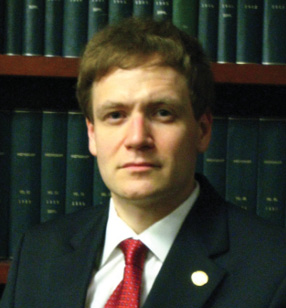The APSF’s mission statement explicitly includes the goal to improve continually the safety of patients during anesthesia care by encouraging and conducting safety research and education. Since 1987, over $8 million has been provided to investigators for patient safety research and the field of anesthesiology continues to be a shining example in health care in this area.
In 2014, the APSF Scientific Evaluation Committee transitioned the process of applying for funding to a Letter of Intent (LOI) submission and review followed by select invitation for full proposal submission to investigators with the highest scoring LOIs. This year the Committee also utilized new online grant management software for investigator submissions of LOIs and full proposals and subsequent review by Committee members. The APSF investigator-initiated grant program had 50 LOI submissions and the Committee invited the top scoring 8 for full proposals. The 8 full proposals were reviewed and scored prior to being discussed on October 11, 2014, at the ASA Annual Meeting in New Orleans, LA. Of the 8 full proposals, 3 were recommended to and approved by the APSF Executive Committee for funding. We are pleased that there continues to be such an enthusiastic interest in the study of patient safety. The principal investigators of this year’s APSF grant awardees provided the following descriptions of their proposed work.

Richard D. Urman, MD, MBA, CPE
Richard D. Urman, MD, MBA, CPE
Assistant Professor of Anesthesia, Harvard Medical School, Brigham and Women’s Hospital, Boston, MA
Dr. Urman’s Clinical Research submission is entitled “Using Emergency Manuals During Interprofessional Crisis Management: Are There Unintended Consequences?”
Background: Despite increasing interest in emergency manuals (EMs), relatively little is known about their effectiveness and limitations in the perioperative setting. Prior studies have been limited in that they evaluated EMs using crises that were tailor-made to match one of their chapters, and there has been minimal participation by attending surgeons and other experienced personnel. Dr. Urman’s and colleagues’ preliminary experience suggests less-than-expected EM use and suboptimal usage, which may be due to the simulation scenario falling “halfway between” 2 different chapters of the EM, raising the question of whether limitations were due to the EM content, team dynamics, or inadequate training in the EM use.
Aims: In this randomized, prospective, two-center simulation-based study at the Brigham and Women’s and Massachusetts General Hospitals, they will utilize clinical scenarios specifically designed to observe the patterns of use and to test the limitations of the EMs. Their first hypothesis is that EMs may not improve, and may even worsen, clinical performance in situations that do not exactly match a specific chapter of that EM, and that EM usage patterns will identify both strengths and limitations of the tools and its implementation. Their second hypothesis is that EM usage patterns will identify strengths and limitations of the tool and its implementation. The participating health care providers, consisting of experienced surgeons, anesthesiologists, and nurses, will be randomized into 4 experimental groups, each exposed to either a “specific” or “non-specific” simulation scenario, along with or without the availability of the EM. The major experimental endpoint will be how many “critical actions” each team performs, scored as the percentage of actions taken from a pre-determined list.
Implications: According to Urman and colleagues, the goal of this study is to improve EM content and use by understanding its limitations during interprofessional team-training simulations and to study whether EMs enhance or detract from clinical performance. This is especially a concern in situations that do not exactly match a specific chapter of the EM, such as cases that are vague and represent multi-factorial diagnostic dilemmas such as hypotension and hypoxemia. Their ultimate goal is to strengthen patient safety by providing guidance for improving EM content, use, and training protocols. Unexpected perioperative events can have significant negative impact on patient outcomes. EMs may improve patient safety during intra-operative crises by focusing the team, providing key facts and details, and cognitively un-burdening the team leader to more effectively step back and engage in global event-management. If, however, current EMs help more in certain types of crises than in others, or are more effectively used by less experienced clinicians, then these limitations need to be identified and addressed through improved EM content and/or training protocols prior to more widespread adoption.
Funding: $149,999 (January 1, 2015 – December 31, 2016). This grant was designated as the APSF/American Society of Anesthesiologists (ASA) President’s Research Award. Dr. Urman is also the recipient of the Ellison C. “Jeep” Pierce, Jr., MD, Merit Award, which provides an additional, unrestricted amount of $5,000.

Quinn L. Johnson, MD, MBA
Quinn L. Johnson, MD, MBA
Assistant Professor of Clinical Anesthesiology, Department of Anesthesiology and Perioperative Medicine, University of Missouri, Columbia, MO
Dr. Johnson’s project is entitled “Does Optimized General Anesthesia Care Reduce Postoperative Delirium In Older Patients Undergoing Hip Fracture Repair?”
Background: Postoperative delirium (POD) occurs in greater than 30% of elderly patients undergoing hip fracture surgery. Although delirium is a temporary condition, it is associated with an increase in morbidity, mortality, length of hospital stay, and an increased need for placement in long-term care facilities. The additional economic costs associated with the treatment of POD exceed $4,000 per patient resulting in an estimated total annual cost in the U.S. as high as $152 billion. The etiology of POD is multifactorial involving a complex interaction between a vulnerable patient and precipitating factors in the perioperative period. Unmodifiable patient risk factors include age, comorbidities, and preoperative cognitive status. A preoperative geriatrics consultation using a multimodal intervention focused on improving modifiable risk factors such as sleep disorders, fluid balance, pain control, and medication management has been shown to decrease POD by approximately one-third. However, there are also intraoperative factors under the control of anesthesia providers that can be modified in an attempt to further reduce the overall incidence and severity of POD.
Aim: The objective of this study is to determine if the incidence and severity of POD can be reduced by optimizing general anesthesia management in elderly patients undergoing surgery for repair of a hip fracture. The hypothesis for the study is that optimization of blood pressure, cerebral oxygenation, and depth of anesthesia will decrease the severity and duration of POD. To evaluate this hypothesis, we will randomize patients to either a standard or an optimized anesthetic technique. After surgery, patients will be evaluated with the confusion assessment method and the delirium rating scale to determine the incidence and severity of POD. The results of the study are intended to enhance patient safety by identifying a general anesthetic technique that can be used by both academic and private practice anesthesia providers to decrease the risk of POD associated with hip fracture surgery.
Implications: At the present time, the only strategy proven to minimize POD is a proactive geriatric consultation utilizing a combination of both pharmacological and non-pharmacological strategies in the perioperative period. If optimization of intraoperative anesthesia care minimizes POD and improves postoperative outcomes, anesthesia providers will become integral members of the perioperative surgical home team for patients requiring surgical intervention for hip fractures. If successful, optimized anesthesia care will result in significant reductions in the economic and societal costs associated with POD. Data from this study may also be used to develop multicenter clinical trials to support and validate the optimized anesthesia management protocol.
Funding: $150,000 (January 1, 2015 – December 31, 2016). This grant was designated as the APSF/American Society of Anesthesiologists (ASA) Endowed Research Award.

Jodi D. Sherman, MD
Jodi D. Sherman, MD
Assistant Professor, Department of Anesthesiology, Yale, School of Medicine, New Haven, CT
Dr. Sherman’s clinical research project is entitled “Environmental and Public Health Impacts of Anesthesia Alternatives.”
Background: Pollution is a hidden and ignored patient safety issue. The U.S. health care sector is highly interconnected with upstream industrial activities that significantly contribute to national emissions to air, water, and land. Anesthesia, in particular, is a resource intense specialty; however, the human disease burden stemming from its pollution is as yet unquantified. Life Cycle Assessment (LCA) is an internationally standardized, science-based approach to quantify emissions and multiple environmental and public health impacts of a product or process over its entire life span, from extraction of natural resources, to material production, device manufacturing, transport, use, and disposal. The study objective is to use LCA to estimate the greenhouse gas emissions directly and indirectly attributable to anesthetic alternatives, to identify opportunities to reduce disease burden stemming from pollution, and improve safety for public health.
Aims: The large global warming impacts of inhaled anesthetics, particularly compared to intravenous propofol, are established. However, there are various additional drugs and devices used in different anesthetic approaches, and whether there is a significant environmental burden that equivocates anesthetic approaches is presently unknown. Dr. Sherman’s group will perform a complete inventory of common drugs and devices utilized for the delivery of anesthesia at Yale-New Haven Hospital for a representative surgery (elective ankle) for which multiple safe anesthetic pathways potentially exist: regional plus sedation, general inhaled, general intravenous, combined regional and general inhaled, and combined regional and general intravenous anesthetics. Next a Life Cycle Inventory will be performed to determine direct and indirect “cradle-to-grave” material inputs for each medical item through manufacturer reporting, industry databases, literature review, and through destructive testing. LCA modeling will then quantify standard environmental pollution and public health impacts for the anesthetic approaches, to translate these inventoried physical flows into measures of environmental change or damage along established impact categories. Finally, Dr. Sherman will estimate national impacts by extrapolating results for each anesthetic pathway through case type totals estimated through the National Anesthesia Clinical Outcomes Registry and the Multicenter Perioperative Outcomes Group databases. The primary endpoint is global warming potential expressed as carbon dioxide equivalents. In addition, secondary endpoints will include 8 other standard categories of environmental and human health outcomes, so relevant tradeoffs can be considered.
Implications: Patient safety ought to include concern for the health and safety of future generations. Should choices exist between safe anesthetic alternatives, the results of this research can aid clinicians to make informed decisions that are safer to the health of the community while maintaining the highest assurance of patient care. Once the LCA for standard drugs and devices is complete, any institution can use the results to identify critical areas to target improvements. Further, the methodology can be applied to any specialty and throughout several scales within health care to identify opportunity for efficiencies, and so anesthesiology as a specialty can continue to serve as a leader in advancements in patient safety.
Funding: $150,000 (January 1, 2015-December 31, 2016).
Dr. Howard is an Associate Professor of Anesthesia at Stanford University School of Medicine and Chair of the APSF Committee on Scientific Evaluation


 Issue PDF
Issue PDF